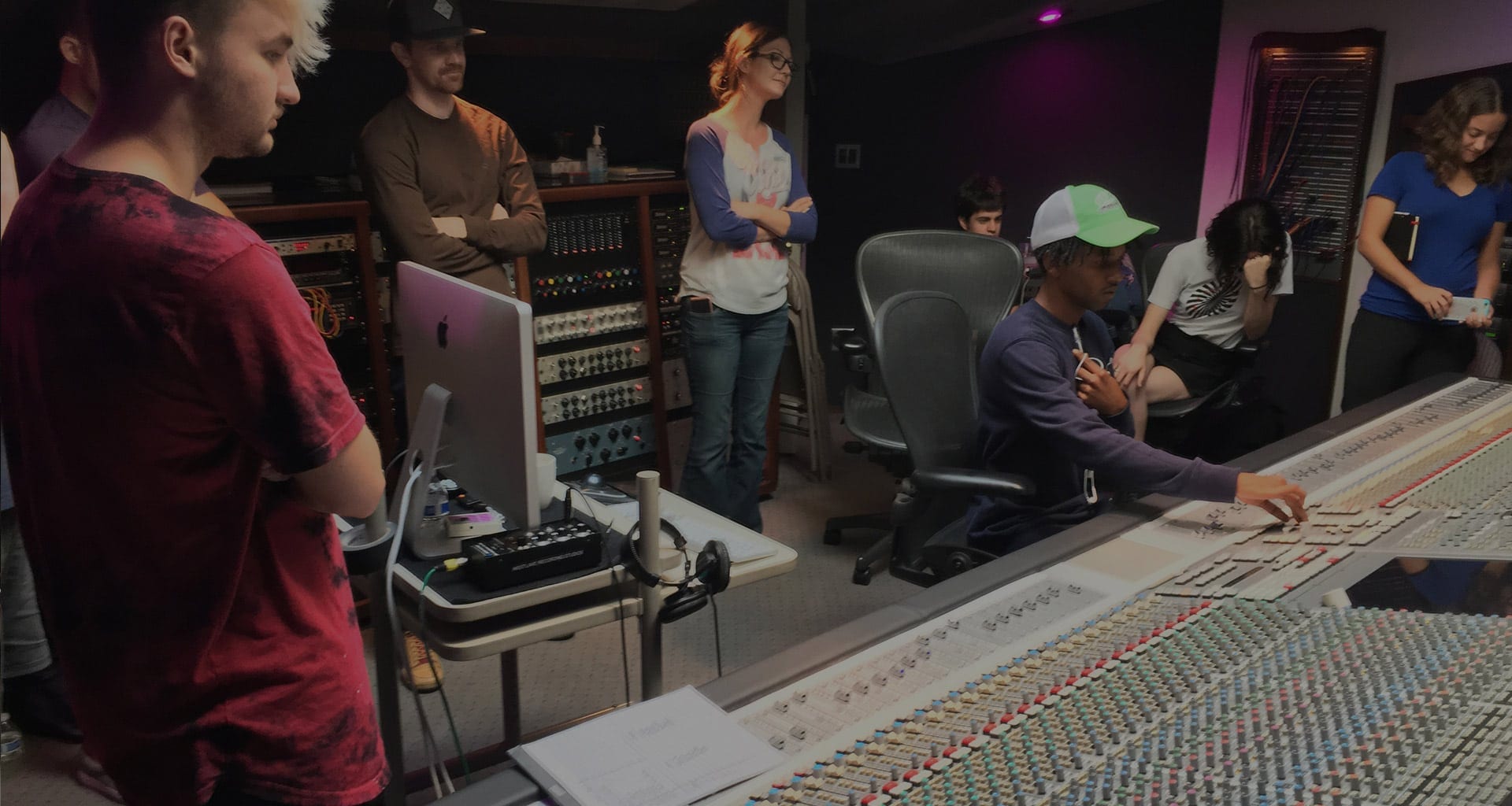Curriculum of timeless recording techniques and latest technologies Includes Sonarworks Reference 4
Crē•8 Music Academy Trains the Next Generation of Pop Music Producers
Los Angeles, March 13, 2019 –When Al Machera and Steve Burdick, the owners of Westlake Recording Studios in West Hollywood, first conceived of Crē•8 Music Academy in 2014 they knew just who to call to help craft the curriculum. Record producer and recording/mixing engineer Doug Fenske had already made a name in the industry, based on his session work with high-profile artists like Bruno Mars, Britney Spears, John Legend, and Quincy Jones, among many others, plus a string of successful albums — including Frank Ocean’s Channel ORANGE, for which Fenske Received a Grammy nod — and had become a sought-after music education instructor in L.A.
Based on Westlake’s storied history as ground zero for some of the most celebrated records of the 20th century the focus of the curriculum was obvious. “I kept coming back to the same question,” Fenske says, “‘Why don’t we teach what’s already been successful in these walls for all these decades?’” Thus, a pop-focused curriculum was created — distilling the best production techniques from the history of recorded music.

Next-Generation Pop Production
Westlake Recording Studios has played host to a star-studded artist roster since its founding in the early 1970s, including the likes of Michael Jackson, Madonna, Rihanna, and Adele. Crē•8 Music Academy follows in this legacy by teaching its student producers time-tested production techniques to bring the music they love to a larger audience. Focusing on what Fenske calls “the five foremost sub-genres of popular music: organic, electronic, urban, singer-songwriter and rock,” which he says are cyclical, Crē•8 defines “Pop” as any music meant for commerce.
Top-of-the-Line Technology
Each course at Crē•8 Music Academy consists of 15 hours of in-depth classroom instruction, including hands-on projects, access to the academy’s recording studio, new production workstations and published course materials. The courses — titled Initi•8, Activ•8, Stimul•8 and Liber•8 — build a foundation of relevant production skills, encompassing commercial composition and arrangement, creative DAW operation, professional vocal production, synthesizers and sound selection, as well as mixing and mastering. Although many classic techniques are taught, Fenske is quick to point out that the school is always on the look-out for the latest in studio technology so that students can stay ahead of the curve. “Twice a year we go in and make sure that everything is fresh, and we’re always looking into new tech to make sure that we’re on top of what could be the next great tool in our toolbox.”

The courses are held in the on-campus studio and lab, which houses 10 workstations, each of which has a Mac Mini, Kensington Trackball, Apogee Pro Tools Duet and an M-Audio Oxygen 49 MIDI controller. Every lab computer has over 500 GB of music production software, including Logic Pro X, Pro Tools 2018, Melodyne, AutoTune, Vocalign, Omnisphere 2.6, Serum, Komplete, Gold Baby 808 instruments, EVOXA, and more, while studio hardware includes JBL LSR308 speakers, Summit mic preamps and compressors, a vocal booth and an array of microphones for recording any vocals or pieces of instrumentation. The last class of the final course, Liber•8, teaches mixing in one of Westlake Recording Studios’ control rooms.

Reaching the Masses
The ability for student producers to make a mix translate to any set of speakers is essential to the curriculum. For that reason, Fenske — who uses Sonarworks Reference 4 in his own session work — brought the software plugin into Crē•8 Music Academy’s classrooms three years ago and it has quickly become a key tool. “For starters, I’ll run Reference across the stereo BUS during active listening experiences to ensure we have balanced audio in the room,” Fenske explains. “We then can make critical observations about the sound during our discussion.” From there, Reference is a key part of the mixing process. “Mix translation goes hand-in-hand with the production tactics we teach,” Fenske says. “We want our songs to be able to be consumed by the hi-fi head, as well as the average person driving down the street in an Accord.”
For additional information about the Future of Top 40 Music Producers, visit https://sonarworks.hummingbirdmedia.com/



Leave a Reply